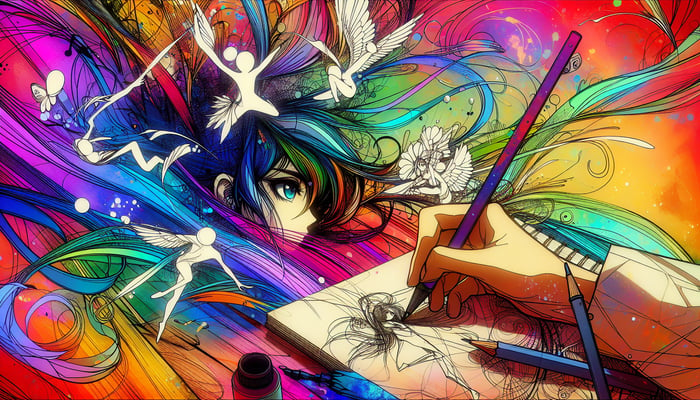Line Work Mastery: Techniques Top Anime Illustrators Use for Dynamic Ink Strokes
Hello art enthusiasts and anime fans! Today, we’re diving into the fascinating world of line work - a key skill that forms the backbone of any successful anime drawing. Whether you're a budding artist or a seasoned pro, these techniques used by top anime illustrators will help you master the craft of creating dynamic and expressive ink strokes.
Understanding the Importance of Line Work
Line work is more than just the outlines of your characters or scenes; it’s a powerful storytelling tool. The weight, movement, and style of your lines can evoke emotions, convey motion, and highlight focal points within your artwork. Let’s explore some expert techniques that can elevate your anime illustrations to a professional level.
1. Varying Line Weight
One of the most effective ways to add depth and interest to your line work is by varying the line weight - the thickness or thinness of your lines. Thicker lines can be used to emphasize the main shapes and create bold outlines, whereas thinner lines are perfect for detailing and subtle textures.
- Tip: Experiment with different pens, such as brush pens or nib pens, to easily switch between line weights.
2. Mastering Stroke Techniques
Dynamic strokes can bring your illustrations to life. Techniques such as tapering the ends of lines add motion and form, while cross-hatching can suggest shading and texture. Practicing these techniques will enhance the realism and energy of your art.
- Tip: Practice drawing continuous S-curves and C-curves to get comfortable with creating fluid and natural lines.
3. Creating Movement with Lines
Movement is crucial in anime art. Whether it’s a wind-swept hair or a swashbuckling sword swing, your lines should mimic and exaggerate the action. Use long sweeping strokes for smooth motion, and shorter, repetitive lines to imply vibration or speed.
- Tip: Study action sequences from your favorite anime scenes and observe how the illustrators achieve a sense of motion.
4. Incorporating Textures
Textures enrich your illustrations, providing a sense of realism and detail that brings your artwork to life. Use varied line patterns to simulate surfaces like fabric, wood, or hair. Combining chaotic and orderly lines can suggest complexity and create contrast.
- Tip: Use stippling or dashes for softer textures and parallel lines for rougher ones.
5. Capturing Emotions through Lines
The expression conveyed by your character often relies heavily on subtle line work. Sharper angles in the eyebrows can suggest anger, while softer, curved lines might imply sadness or empathy. The key is to adjust the line quality to complement the emotional tone.
- Tip: Sketch various facial expressions focusing on how different lines alter the conveyed emotions.
Conclusion
Mastering these techniques takes practice and patience, but with each stroke, your skills will grow stronger. Remember, every line you create is a step towards improving your craft and making your anime illustrations truly dynamic. What's your favorite line work technique? Share with us in the comments!
Happy drawing, art heroes!
For more tips and insights, don’t forget to bookmark our blog and follow us on social media!
